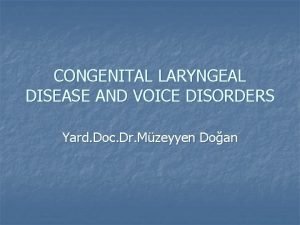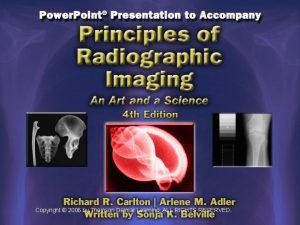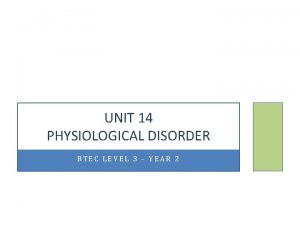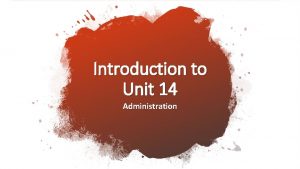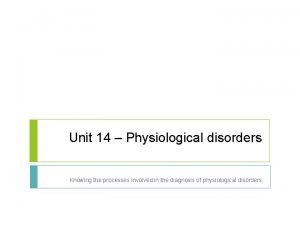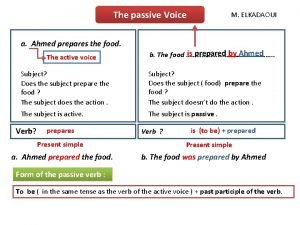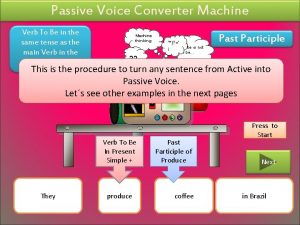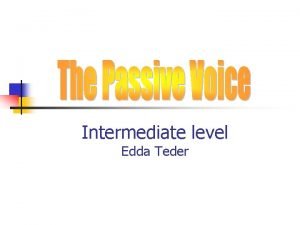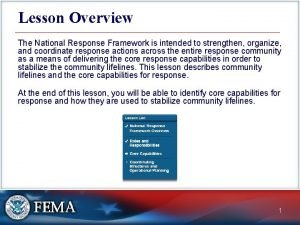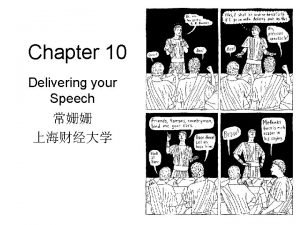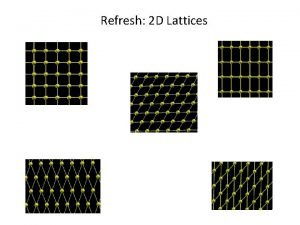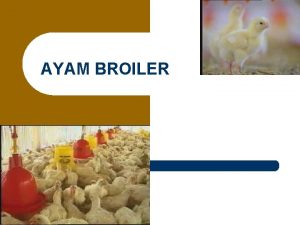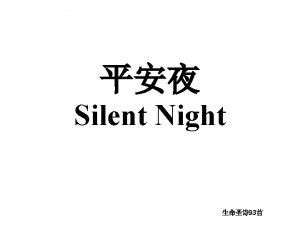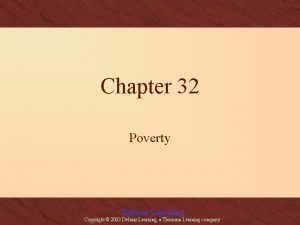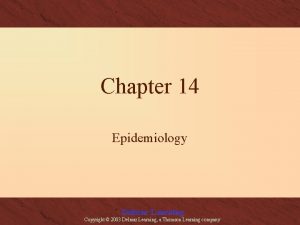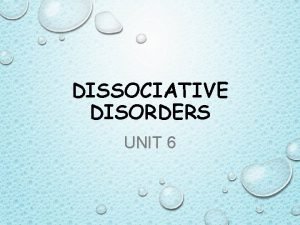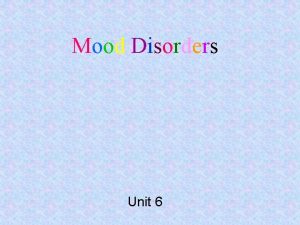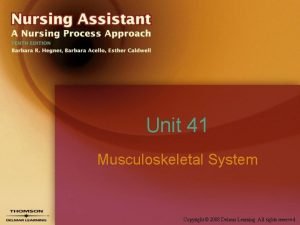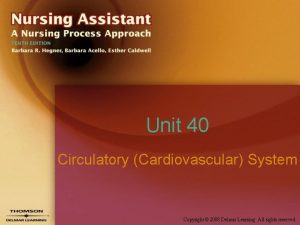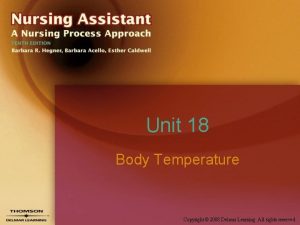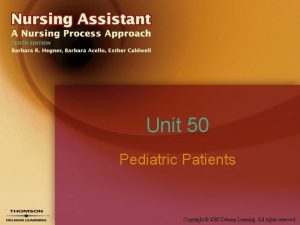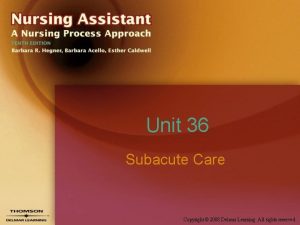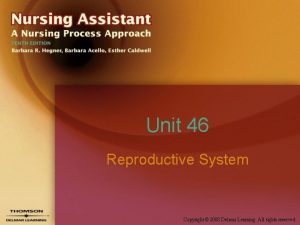Unit Seven Voice Disorders Copyright 2008 Delmar All
































































- Slides: 64

Unit Seven Voice Disorders Copyright © 2008 Delmar. All rights reserved.

Chapter 27 Anatomy and Physiology of the Respiratory and Phonatory Systems Copyright © 2008 Delmar. All rights reserved.

The Respiratory System • Driving support of voice production • Intricate balance between respiration (inhalation and exhalation) and phonation 3 Copyright © 2008 Delmar. All rights reserved.

Supportive Structures of Respiration • Bones in the chest provide framework and protection of the respiratory system • Thorax – Contains the lungs and the heart 4 Copyright © 2008 Delmar. All rights reserved.

Muscles of Respiration • Diaphragm – Primary muscle • Internal and external intercostals • Pectoralis major and minor muscles • Rectus abdominis muscles 5 Copyright © 2008 Delmar. All rights reserved.

Trachea • Extends from larynx down to the lungs • Composed of cartilaginous rings 6 Copyright © 2008 Delmar. All rights reserved.

Respiratory Process • • • Diaphragm lowers and rib cage expands Space in thoracic cavity increases Air pressure decreases in lungs Air flows down trachea into lungs Alveolar sacs and chest relax and air is forced from lungs 7 Copyright © 2008 Delmar. All rights reserved.

Phonation • Larynx is the organ of phonation • Sits at top of trachea and below root of tongue 8 Copyright © 2008 Delmar. All rights reserved.

Framework of Larynx • • Cricoid cartilage Thyroid cartilage Two arytenoid cartilages Epiglottis 9 Copyright © 2008 Delmar. All rights reserved.

The Vocal Folds • Biological function – To prevent food/liquid entering the trachea • Overlaid function of true vocal folds is to produce voice 10 Copyright © 2008 Delmar. All rights reserved.

Vocal Folds • Glottis – Space between open vocal folds • Posteriorly – Vocal folds attach to the arytenoids 11 Copyright © 2008 Delmar. All rights reserved.

Vocal Fold Vibration • Vocal folds must open and close to produce voice • Vocal folds are open when breathing 12 Copyright © 2008 Delmar. All rights reserved.

Vocal Fold Vibration • To produce voice – Folds close • Air pressure beneath the folds increases and forces folds to open • Elasticity and Bernoulli’s law causes folds to close • Subglottic air pressure builds up and forces folds to open again 13 Copyright © 2008 Delmar. All rights reserved.

Maximum Phonation Time (MPT) • Length of time a person can sustain a tone or sound on one expiration • Varies based on gender, age, physical characteristics, health 14 Copyright © 2008 Delmar. All rights reserved.

Frequency • Frequency – Number of cycles of opening and closing the vocal folds per second – Measured in Hertz (Hz) • Fundamental frequency – Rate of vocal fold vibration 15 Copyright © 2008 Delmar. All rights reserved.

Pitch • Psychological sensation of the frequency of a sound • Pitch changes based on vocal fold: – Tension – Mass – Length 16 Copyright © 2008 Delmar. All rights reserved.

Loudness • Perceptual correlate of intensity of a sound – Intensity measured in decibels (d. B) • Relates to the force with which vocal folds open and close and the amount of air that escapes 17 Copyright © 2008 Delmar. All rights reserved.

Voice Quality • Judgments of voice quality are subjective • Quality is affected by: – Adequate vocal fold closure – Efficient timing of closure – Amount of tonicity within the folds 18 Copyright © 2008 Delmar. All rights reserved.

Chapter 28 Voice Disorders in Children and Adults Copyright © 2008 Delmar. All rights reserved.

Voice Disorder • A deviation of loudness, pitch, or quality out of the range of a person’s age, gender, or geographical background 20 Copyright © 2008 Delmar. All rights reserved.

Classification of Voice Disorders • Functional – Faulty use of mechanism • Neurological – Related to muscle control and innervation of muscles • Organic – Related to physical changes in larynx 21 Copyright © 2008 Delmar. All rights reserved.

Functional Voice Disorders • Hyperfunctional – Excess tension or forcing in larynx • Hypofunctional – Decreased or inadequate tension or reduced vocal capacity 22 Copyright © 2008 Delmar. All rights reserved.

Laryngitis • Inflammation of vocal folds • Voice is associated with lowered pitch and phonation breaks • Vocal quality is hoarseness 23 Copyright © 2008 Delmar. All rights reserved.

Chronic Laryngitis • Laryngitis lasting longer than 10 days • Causes may include: – Traumatic laryngitis – Allergies – Singing excessively at damaging intensity levels – Smoking 24 Copyright © 2008 Delmar. All rights reserved.

Vocal Nodules • Most common benign lesions in children and adults • Typically bilateral • Occur at juncture of anterior and middle one third of vocal folds 25 Copyright © 2008 Delmar. All rights reserved.

Vocal Nodules • Caused by continuous abuse/misuse of voice – Screaming, coughing, singing in abusive manner • Voice quality is hoarseness 26 Copyright © 2008 Delmar. All rights reserved.

Vocal Polyps • Benign vocal fold lesions • Frequently unilateral • Occur at juncture of anterior and middle one-third of vocal folds • Vocal quality is hoarseness 27 Copyright © 2008 Delmar. All rights reserved.

Functional Dysphonia • May be hyperfunctional or hypofunctional • No medical or surgical treatment • SLP works to improve intensity, pitch, quality • Psychological support may be beneficial 28 Copyright © 2008 Delmar. All rights reserved.

Functional Aphonia • Hyperfunctional voice disorder • Voice is typically whispered • Most causes are psychological 29 Copyright © 2008 Delmar. All rights reserved.

Falsetto • High-pitched breathy voice • Produced by vibration of anterior onethird of the vocal folds 30 Copyright © 2008 Delmar. All rights reserved.

Organic Voice Disorders • • Papillomas Contact ulcers Trauma Cancer 31 Copyright © 2008 Delmar. All rights reserved.

Papillomas • Soft wart-like growths • Viral in origin • Occur mainly in children – 4 -6 years • Vocal quality is hoarseness • Treatment is surgical removal 32 Copyright © 2008 Delmar. All rights reserved.

Contact Ulcers • Small ulcers at juncture of middle and posterior one third of folds • Can be caused by: – Persistent and excessive slamming of arytenoids and hard glottal attacks – Gastroesophageal reflux – Intubation for surgery 33 Copyright © 2008 Delmar. All rights reserved.

Contact Ulcers • Voice quality is hoarseness • Voice therapy is usually successful 34 Copyright © 2008 Delmar. All rights reserved.

Traumas • Various traumas can compromise the airway and affect the larynx • Voice therapy will focus on helping clients achieve their most functional voice 35 Copyright © 2008 Delmar. All rights reserved.

Cancer • Requires surgical and medical treatment 36 Copyright © 2008 Delmar. All rights reserved.

Neurological Voice Disorders • Hypoadduction – Difficulty getting the vocal folds together – Vocal fold paralysis • Hyperadduction – Vocal folds close too tightly or for too long 37 Copyright © 2008 Delmar. All rights reserved.

Vocal Fold Paresis and Paralysis • Unilateral paralysis – Vocal quality is breathy – Has low intensity – Diplophonia 38 Copyright © 2008 Delmar. All rights reserved.

Spasmodic Dysphonia • • Strained, strangled, harsh vocal quality Affects females more than male Onset on average at 45 years of age Treatment involves voice therapy and medical-surgical approach (Botox) 39 Copyright © 2008 Delmar. All rights reserved.

Chapter 29 Voice Evaluation and Therapy Copyright © 2008 Delmar. All rights reserved.

Examination • Indirect laryngoscopy – Place a laryngeal mirror into back of mouth – Direct light onto mirror to shine on the vocal folds 41 Copyright © 2008 Delmar. All rights reserved.

Examination • Endoscope placed intraorally or transnasally • Can be videotaped (videoendoscopy) – Or observed with a strobe light (videostroboscopy) 42 Copyright © 2008 Delmar. All rights reserved.

Voice Screening • Screenings of voice will determine if a complete evaluation is needed • Screening tasks include: – Count 1 to 10 – Conversation – Phonating vowels 43 Copyright © 2008 Delmar. All rights reserved.

Voice Evaluation • Case history • Assessment of voice – Perceptual, acoustic, physiologic • Instrumental evaluations • Self-perception 44 Copyright © 2008 Delmar. All rights reserved.

Instrumental Evaluations • • Aerodynamic Electroglottography Electromyographic assessment Photoglottography 45 Copyright © 2008 Delmar. All rights reserved.

Voice Therapy • Multifaceted approach is required • Specific voice therapy will depend on age of client, type, and severity of disorder 46 Copyright © 2008 Delmar. All rights reserved.

Hygienic Voice Therapy • First step in many therapy programs • Focus on instilling healthy vocal behaviors in habitual speech patterns – Determine misuse – Become aware of these behaviors – Eliminate damaging behaviors 47 Copyright © 2008 Delmar. All rights reserved.

Symptomatic Voice Therapy • Reduce/eliminate abuse and misuse of voice through facilitating techniques – Auditory feedback – Change of loudness – Counseling 48 Copyright © 2008 Delmar. All rights reserved.

Psychogenic Voice Therapy • Identify and modify the emotional and psychosocial behavioral reasons that cause a voice disorder 49 Copyright © 2008 Delmar. All rights reserved.

Physiological Voice Therapy • Directly alter or modify the physiology of the vocal mechanism 50 Copyright © 2008 Delmar. All rights reserved.

Eclectic/Holistic Voice Therapy • Combination of any or all of the orientations and approaches of voice therapy 51 Copyright © 2008 Delmar. All rights reserved.

Laryngectomy • Surgical removal of the larynx • Surgical approach to treating laryngeal cancer 52 Copyright © 2008 Delmar. All rights reserved.

Before a Laryngectomy • Establish immediate means of communication after surgery • Discuss choices of voice production – Tracheoesophageal puncture (TEP) – Esophageal speech – Electrolarynx 53 Copyright © 2008 Delmar. All rights reserved.

Tracheoesophageal Puncture (TEP) • Incision made into trachea • Valve directs air from trachea into esophagus 54 Copyright © 2008 Delmar. All rights reserved.

Esophageal Speech • Compressing air and injecting into esophagus • Expel air from esophagus causing it to vibrate upper esophageal valve 55 Copyright © 2008 Delmar. All rights reserved.

Electrolarynx • Neck devices with vibrating source that produces sound 56 Copyright © 2008 Delmar. All rights reserved.

Chapter 30 Emotional and Social Effects of Voice Disorders Copyright © 2008 Delmar. All rights reserved.

Emotional and Social Effects • The voice reflects our personality • It is an indicator of emotions and attitudes 58 Copyright © 2008 Delmar. All rights reserved.

The Voice • The voice is the mirror of the person • The voice reflects our personality • The voice is an indicator of emotions and attitudes 59 Copyright © 2008 Delmar. All rights reserved.

Voice • In a social context, the voice will convey: – Semantic content – Emotional state – Personality characteristics 60 Copyright © 2008 Delmar. All rights reserved.

Young Children • Many children are unaware or unconcerned with a hyperfunctional voice disorder • Voice therapy may not begin until kindergarten • Parents are counseled on how to encourage less abusive voice use by their children 61 Copyright © 2008 Delmar. All rights reserved.

Children • As children get older, they become aware of their voice and are better candidates to participate in voice therapy 62 Copyright © 2008 Delmar. All rights reserved.

Adolescents • Adolescents with chronic voice problems are typically motivated to participate in a voice therapy program • Adolescents with falsetto voices can experience significant social penalties – especially boys 63 Copyright © 2008 Delmar. All rights reserved.

Adults • Twenty-five percent of adults are displeased with the sound of their voices • A holistic approach to treatment views the whole person when determining the best therapy program for an adult with a voice disorder 64 Copyright © 2008 Delmar. All rights reserved.
 2008 2008
2008 2008 Copyright 2008
Copyright 2008 Copyright 2008
Copyright 2008 Copyright 2008
Copyright 2008 Copyright 2008
Copyright 2008 Pearson education inc publishing as pearson prentice hall
Pearson education inc publishing as pearson prentice hall Copyright 2008
Copyright 2008 Copyright 2008
Copyright 2008 Congenital voice disorders
Congenital voice disorders Chapter 6:2 interpreting word parts
Chapter 6:2 interpreting word parts 2009 delmar cengage learning
2009 delmar cengage learning Delmar learning medical abbreviations
Delmar learning medical abbreviations 2009 delmar cengage learning
2009 delmar cengage learning Delmar isotonic
Delmar isotonic Delmar tsi
Delmar tsi Delmar logistics
Delmar logistics Delmar thomson learning
Delmar thomson learning Chapter 6 the skeletal system answer key
Chapter 6 the skeletal system answer key Chapter 13 medical math assignment sheet cengage learning
Chapter 13 medical math assignment sheet cengage learning 2009 delmar cengage learning
2009 delmar cengage learning Borgify
Borgify Delmar cengage learning instructor resources
Delmar cengage learning instructor resources Name all the lines
Name all the lines 7 deadly sins and heavenly virtues
7 deadly sins and heavenly virtues Unit 14 health and social care example
Unit 14 health and social care example Unit 14 assignment 2 health and social care
Unit 14 assignment 2 health and social care Unit 14 physiological disorders assignment 1
Unit 14 physiological disorders assignment 1 Unit 14 physiological disorders assignment 2
Unit 14 physiological disorders assignment 2 Unit 14 physiological disorders and their care
Unit 14 physiological disorders and their care Unit 14 physiological disorders
Unit 14 physiological disorders Passive sentence pattern
Passive sentence pattern Active passive rules chart
Active passive rules chart Active to passive voice converter
Active to passive voice converter Future passive
Future passive Passive grammer
Passive grammer Passive voice cvičenia
Passive voice cvičenia Copyright 2015 all rights reserved
Copyright 2015 all rights reserved Copyright 2015 all rights reserved
Copyright 2015 all rights reserved Dell all rights reserved copyright 2009
Dell all rights reserved copyright 2009 Copyright © 2018 all rights reserved
Copyright © 2018 all rights reserved Unit 10, unit 10 review tests, unit 10 general test
Unit 10, unit 10 review tests, unit 10 general test 7 life processes
7 life processes Which core capability makes it possible
Which core capability makes it possible Passive voice formula of all tenses
Passive voice formula of all tenses Booming your voice to reach all listeners
Booming your voice to reach all listeners Vocabulary unit 7
Vocabulary unit 7 Unit seven
Unit seven Seven primitive unit cells
Seven primitive unit cells Help ever hurt never meaning in tamil
Help ever hurt never meaning in tamil Interventi sociali rivolti all'infanzia e all'adolescenza
Interventi sociali rivolti all'infanzia e all'adolescenza Above all powers
Above all powers I work all night
I work all night All to one reduction
All to one reduction Sistem all in all out
Sistem all in all out Spf -all vs ~all
Spf -all vs ~all Silent night holy night all is calm
Silent night holy night all is calm 馮定華神父
馮定華神父 All of you is more than enough for all of me
All of you is more than enough for all of me John donne born
John donne born No guilt in life no fear in death
No guilt in life no fear in death Above all powers above all kings
Above all powers above all kings Neurocognitive disorder
Neurocognitive disorder Bipolar and other related disorders
Bipolar and other related disorders Bipolar and other related disorders
Bipolar and other related disorders Flinders model of care
Flinders model of care








